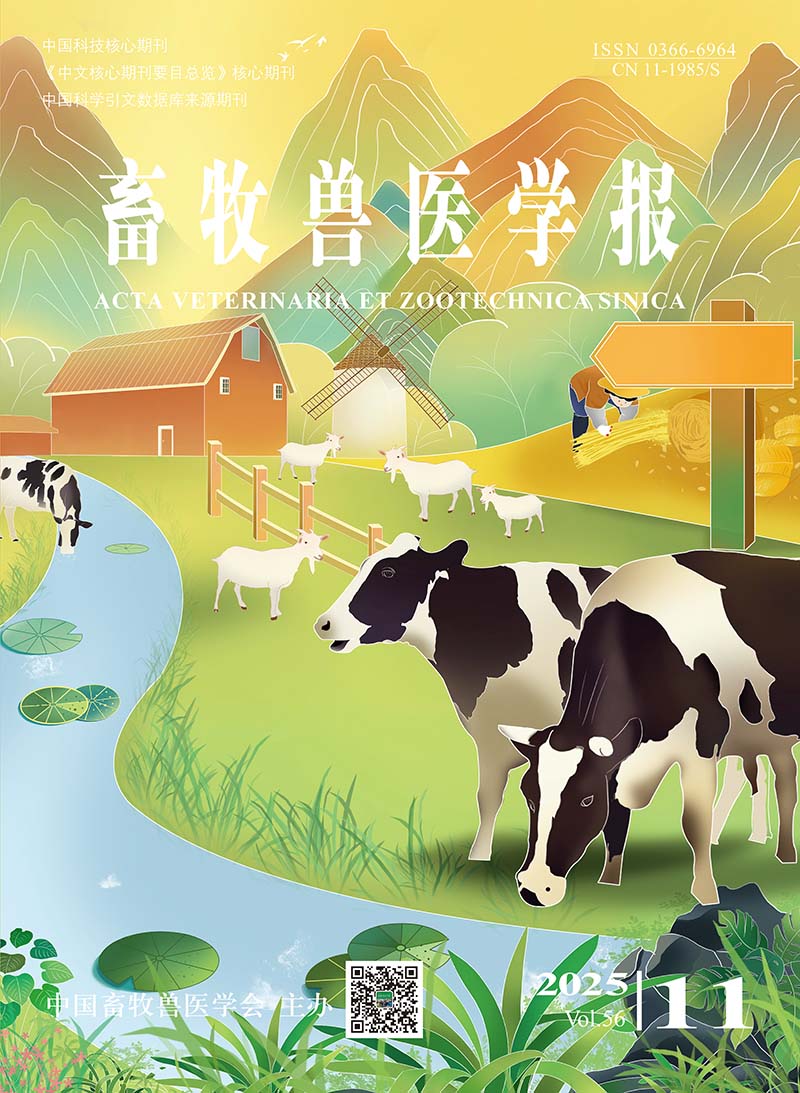-
Effect of Resveratrol on Methane Production, Nutrient Degradation and Microbial Community under Different Substrates
- WU Wancheng, MA Tao, LIU Na, YANG Lei, CHEN Guoshun, DIAO Qiyu
-
2020, 51(6):
1281-1294.
doi:10.11843/j.issn.0366-6964.2020.012
-
 Abstract
(
395 )
Abstract
(
395 )
 HTML( )
HTML( )
 PDF (3416KB)
(
433
)
PDF (3416KB)
(
433
)
-
References |
Related Articles |
Metrics
This experiment investigated the effects of resveratrol (RES) on methane (CH4) emissions, nutrient degradation and microbial community in two types of substrate, aiming to explore the mechanisms of RES regulating rumen fermentation and reducing CH4 emissions. This experiment was a two-factor design. Three rams with similar body weight((50±2.3) kg) and health status installed with permanent rumen fistula were selected as rumen fluid donors. In experiment one, 0%, 7.7%, 14.3% and 25.0% RES were added to the substrates with a concentrate:forage ratio of 68:32 (high concentrate, HC) and 28:72 (high forage, HF), respectively, for testing gas production. High-throughput sequencing of 16S amplicons was performed in the control group and 14.3% group. In experiment two, 0% and 14.3% RES were added to the above two substrates for degradation rate test. Five replicates were set for the above experimental treatments. The results showed that:1) The gas production (GP) and CH4 production of the two substrates decreased linearly with the increase in RES level (P<0.05); At the same RES level, compared with HC, GP and CH4 production in HF were significantly reduced (P<0.05), and the two factors had an interactive effect on the changes of the two indicators (P<0.05). 2) The degradation rates of dry matter(DM), organic matter(OM), crude protein(CP), neutral detergent fiber(NDF), and acid detergent fiber(ADF) of the two substrates were significantly decreased after supplemented with RES (P<0.05). Compared with HC, the degradation rate of each nutrient in HF was significantly reduced at the same RES level, and there was an interaction between the two factors on degradation rate of neutral detergent fiber (NDFD) and degradation rate of acid detergent fiber (ADFD) at 24 h of fermentation (P<0.05). 3) At phylum level, the addition of RES in both substrates resulted in a significant increase in the Proteobacteria (P<0.05); compared with HC, the abundance of the Proteobacteria in HF increased significantly (P<0.05). In addition, at 24 h of fermentation, the addition of RES in HF caused a significant decrease in the Synergistetes (P<0.05); at 12 h of fermentation, Compared with HC, the abundance of Actinomycetes in HF significantly decreased at the same RES level. At genus level, the addition of RES and the change of substrate types all resulted in a significant decrease in the abundance of Prevotella_1, and it was statistically significant at HC (12 h fermentation) and HF (24 h fermentation) (P<0.05); Ruminobacter and Succinivibrio, the dominant strains of Proteobacteria, increased significantly with RES supplemetation (P<0.05). In addition, at 12 h of fermentation, RES was added to HF, the abundance of Rikenellaceae_RC9_gut_group, Prevotellaceae_NK3B31_group and Christensenellaceae_R-7_group increased significantly (P<0.05). Compared with HC, Prevotellaceae_UCG-001, Prevotellaceae_NK3B31_group and Christensen ellaceae_R-7-_group decreased significantly in HF (P<0.05). At 24 h of fermentation, the addition of RES in HF resulted in a significant decrease in the abundance of Veillonellaceae_UCG-001 and Lachnospiraceae_XPB1014_group (P<0.05), Prevotellaceae_UCG-001, Phocaeicola, Prevotellaceae_NK3B31_group, Succiniclasticum, Christensenellaceae_R-7_group, Ruminococcaceae_NK4A214_group and Ruminobacter were significantly increased (P<0.05); and the two factors had an interaction effect on the abundance changes of Prevotella_1, Succiniclasticum, Veillonellaceae_UCG-001 and Lachnospiraceae_XPB1014_group (P<0.05). The results showed that,high level of RES suppplementation effectively reduced the CH4 emission, but inhibited the degradation of nutrient in the rumen, which might be related to the significant decline of Prevotella_1 in the rumen flora.






